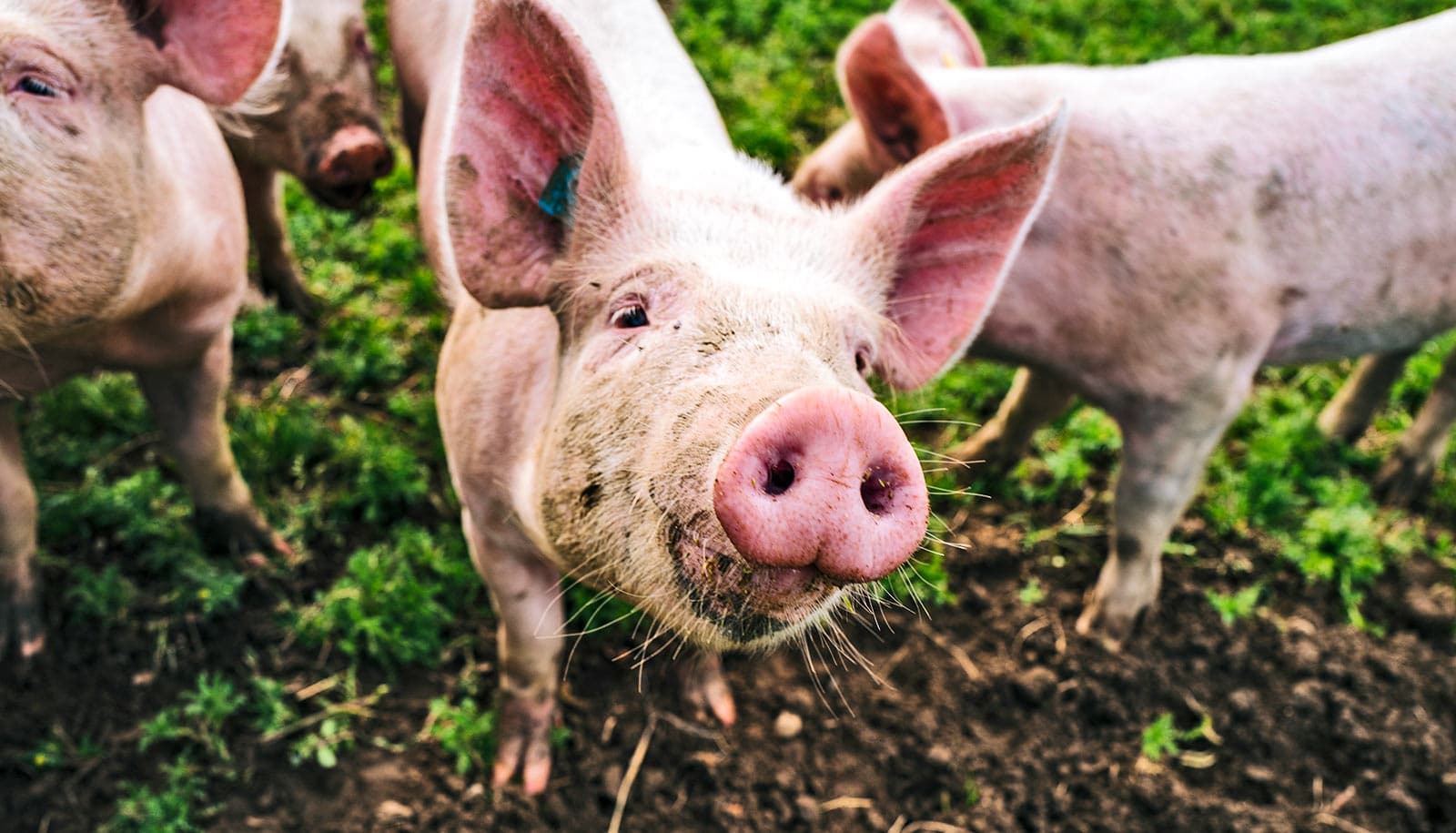Researchers have translated pig grunts into emotions.
Using more than 7,000 audio recordings of pigs, researchers designed an algorithm that can decode whether an individual pig is experiencing a positive emotion (“happy” or “excited”), a negative one (“scared” or “stressed”), or somewhere in between.
Researchers collected the recordings in a wide range of situations encountered by commercial pigs, both positive and negative, from when they are born until their deaths.
“With this study, we demonstrate that animal sounds provide great insight into their emotions. We also prove that an algorithm can be used to decode and understand the emotions of pigs, which is an important step towards improved animal welfare for livestock,” says Elodie Briefer, associate professor in the biology department at the University of Copenhagen and co-lead author of the study in Scientific Reports.
The researchers recorded pig sounds in both commercial and experimental scenarios, which based on the behavior of the pigs, are either associated with a positive and negative emotion. Positive situations included, for example, those when piglets suckle from their mothers or when they are reunited with their family after being separated. The emotionally negative situations included, among others, separation, fights between piglets, castration, and slaughter.
In experimental stables, the researchers also created various mock scenarios for the pigs, designed to evoke more nuanced emotions in the middle of the spectrum. These included an arena with toys or food and a corresponding arena without any stimuli.
The researchers also placed new and unfamiliar objects in the arena for the pigs to interact with. Along the way, researchers monitored and recorded when possible the pigs’ calls, behavior, and heart rates.
The researchers then analyzed the more than 7,000 audio recordings to see if there was a pattern in the sounds as a function of the emotions, and if they could discern the positive situations and emotions from the negative ones.
As already revealed in previous research, the researchers collected more high-frequency calls (such as screams and squeals) in negative situations. At the same time, low-frequency calls (such as barks and grunts) occurred both in situations where the pigs experienced positive or negative emotions.
The situations between the extremes were particularly interesting. With an even more thorough analysis of the sound files, the researchers found a new pattern that revealed what the pigs experienced in certain situations in even greater detail.
“There are clear differences in pig calls when we look at positive and negative situations. In the positive situations, the calls are far shorter, with minor fluctuations in amplitude. Grunts, more specifically, begin high and gradually go lower in frequency. By training an algorithm to recognize these sounds, we can classify 92% of the calls to the correct emotion,” Briefer says.
The study of animal emotions is a relatively new field that has come about over the last 20 years. Today, it is widely accepted that the mental health of livestock is important for their overall well-being. Nevertheless, today’s animal welfare focuses primarily on the physical health of livestock. Indeed, several systems exist that can automatically monitor an animal’s physical health for a farmer.
“We have trained the algorithm to decode pig grunts. Now, we need someone who wants to develop the algorithm into an app that farmers can use to improve the welfare of their animals,” says Briefer.
She adds that, with enough data to train the algorithm, the method could also be used to better understand the emotions of other mammals.
Additional coauthors are from ETH Zurich and the National Research Institute for Agriculture, Food and Environment (INRAE) in France.
Source: University of Copenhagen

